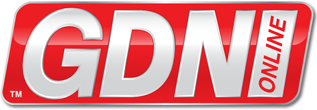France's Hermes will fully shift the burden of tariffs in the United States to its wealthy clientele, the company said on Thursday, as it posted first-quarter sales that slightly missed market expectations in a rare show of weakness.
Hermes's first-quarter sales were dragged down by a continued lull in China, but were still better than peers.
At the start of the week, sector bellwether LVMH reported a 5% sales drop in its all-important fashion and leather division and Hermes took its place as the world's most valuable luxury group by market cap.
As the family-controlled Hermes adapts to the trade war unleashed by US President Donald Trump's tariffs, it is banking on its pricing power as one of the most exclusive luxury brands to add a premium to all products sold in the United States.
That will be on top of regular price adjustments that were around 6%-7% this year.
"We are going to fully offset the impact of these new duties by increasing our selling prices in the United States from May 1, across all our business lines," said Finance Chief Eric du Halgouet. The company flagged possible tariff-related price hikes in February.
The brand known for its Kelly and Birkin handbags, which sell for at least $10,000, reported sales for the three months ending in March of 4.1 billion euros ($4.66 billion), a 7% rise on a constant currency basis, below analyst expectations for 9.8% year-on-year growth, according to a VisibleAlpha consensus estimate cited by HSBC.
The performance was "not up to the usual Hermes standards in our view," analysts from JP Morgan wrote in a note to clients. Shares in the company were down by around 1.9% by 0800 GMT, recovering from deeper falls in opening Paris trade.
EXCLUSIVE AURA STRATEGY
Keeping a tight grip on output levels, the company is sticking with production increases of 6% to 7% each year. That helps to maintain the exclusive aura around its leather goods and has helped to make to the company resilient during a downturn even though it can cap growth.
Speaking to journalists on a call, du Halgouet said the company had yet to notice any significant change in shopper behaviour in the United States, where it still saw double-digit growth.
"Of course, we are cautious about the United States given the discussions, the geopolitical uncertainty which, as you know, have caused a great deal of volatility on the financial markets," he said.
The luxury industry has been counting on wealthy Americans to reignite growth for the sector, but after Trump's April tariff announcements sent stock markets and the dollar plunging, the sector is bracing for what could be its longest slump in years.
The US tariffs could include a 20% charge on European fashion and leather goods and 31% for Swiss-produced watches if fully applied. Last week, Trump paused most of his tariffs for 90 days, setting a general 10% duty rate instead.
Commenting on China, another major market, which is weighed down by a real estate crisis, du Halgouet said he has not seen any major signs of improvement, but that government efforts to boost spending were a positive signal.
In Europe, where sales were boosted by travelling Americans benefiting from a strong dollar at the start of the year, Hermes sales grew 13.3%. Du Halgouet cautioned the positive trend might not last as the dollar has since weakened.
Elsewhere in the sector, Italian luxury outerwear group Moncler on Wednesday reported a stronger than expected 1% increase in revenue in the first quarter, driven by direct-to-consumer sales and Asian demand, while cashmere brand Brunello Cucinelli released growth figures in line with analyst expectations.

.jpg?20250425')
&uuid=(email))